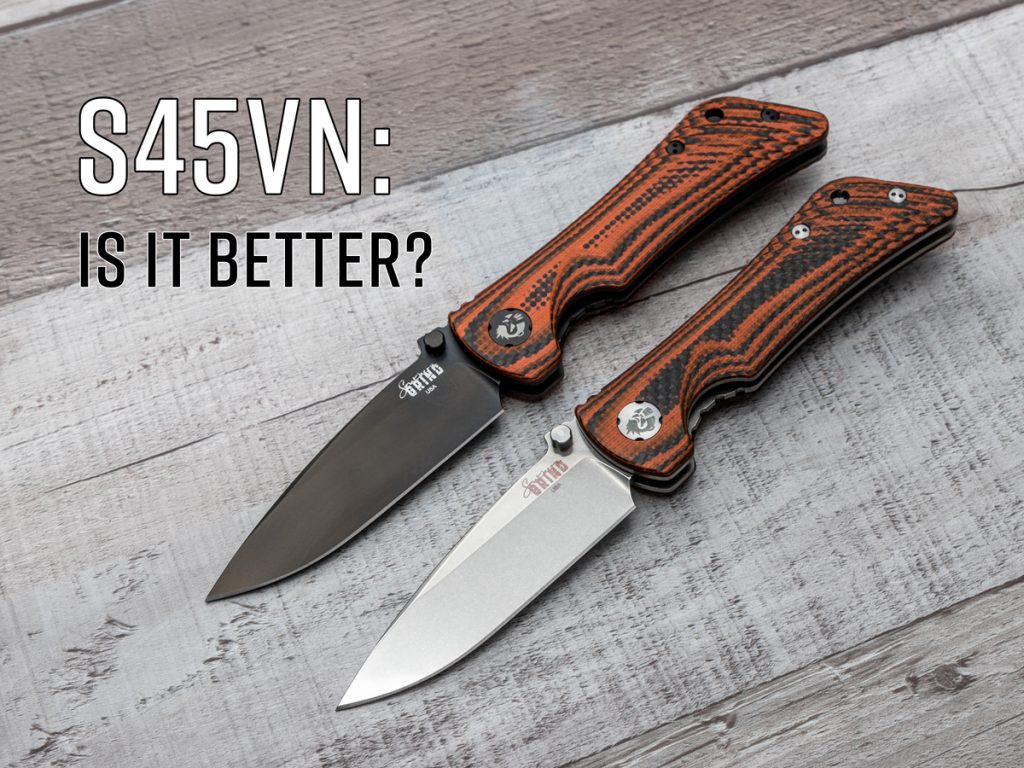S45VN vs S30V vs S35VN: What’s the Difference Between These Knife Steels?

It all started with S30V. Before S30V came out in 2001, most of the high-performance steels used for knives were originally designed for something else, and borrowed by knifemakers for use in cutlery. S30V, on the other hand, was developed by steelmaker Crucible Industries in coordination with leading knifemakers specifically for use in high-end pocket knives. They wanted to make something that was simple to heat-treat, well-balanced to suit a wide range of applications, and better than everything else at the price point. And they succeeded! For years, S30V was the standard-bearer for modern metallurgy to the point that it became almost ubiquitous on knives above a certain price point.
In 2009, Crucible revised S30V to make S35VN, which traded some edge retention for more toughness and easier grindability. Knife makers and end users alike appreciated the resulting improvement in ease of sharpening, but there were those who missed the level of edge retention that S30V offered in comparison.
So, a little over ten years later Crucible rebalanced the formula again to make S45VN, which offers similar edge retention to the original S30V, but better toughness and stain resistance similar to S35VN.
A Closer Look at Each Steel
S30V: The Original Standard
As the original, S30V set a high bar with excellent edge retention thanks to its high vanadium content. While its corrosion resistance is very good, its toughness is the lowest of the three, making it slightly more prone to chipping. The same properties that give it a long-lasting edge also make it moderately difficult to sharpen.
S35VN: The Tougher Successor
S35VN was engineered for better toughness—about 15-20% more than S30V—making it much more durable. This came at the cost of slightly reduced edge retention compared to S30V, but it gained a reputation for being much easier to sharpen. Its corrosion resistance remains very good and on par with its predecessor.
S45VN: The Balanced Refinement
S45VN represents a “best of both worlds” approach. While it doesn’t quite match the “on paper” edge retention of S30V, it’s close, and its improved toughness gives it the edge in a real-world cutting contest where pure abrasion resistance isn’t the only factor. It also has excellent corrosion resistance, beating the other two thanks to higher chromium. Its toughness is a solid improvement over S30V, though not quite as high as S35VN, making it a truly well-rounded performer.
So, is S45VN Actually Better?
Yes, but the improvements are incremental. S45VN stands as a polished upgrade over its predecessors. It is tougher than S30V and holds an edge better than S35VN, creating a “goldilocks” combination of attributes that make it an exceptionally balanced choice for almost any knife.
Which Steel is Right for You?
While most users may not notice a dramatic difference in everyday use, the distinctions matter for enthusiasts or those in demanding environments.
- For Maximum Toughness: S35VN is the top pick for hard use where chipping is a concern.
- For Edge Retention and Corrosion Resistance: S45VN has a clear advantage, ideal for those who need a long-lasting sharp edge and protection from rust.
- For Proven Performance and Value: S30V remains a fantastic and reliable steel, often available at a more accessible price point.